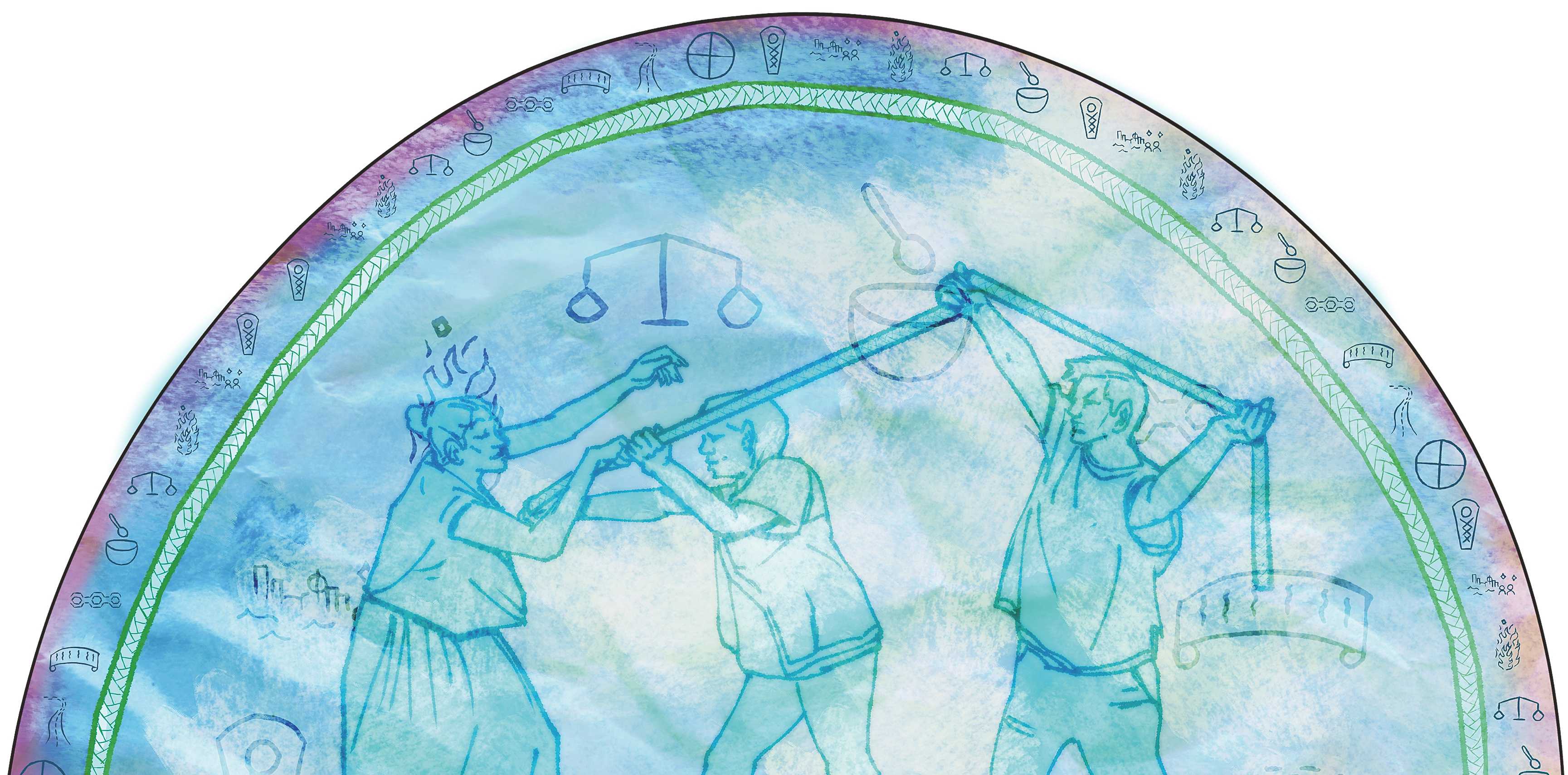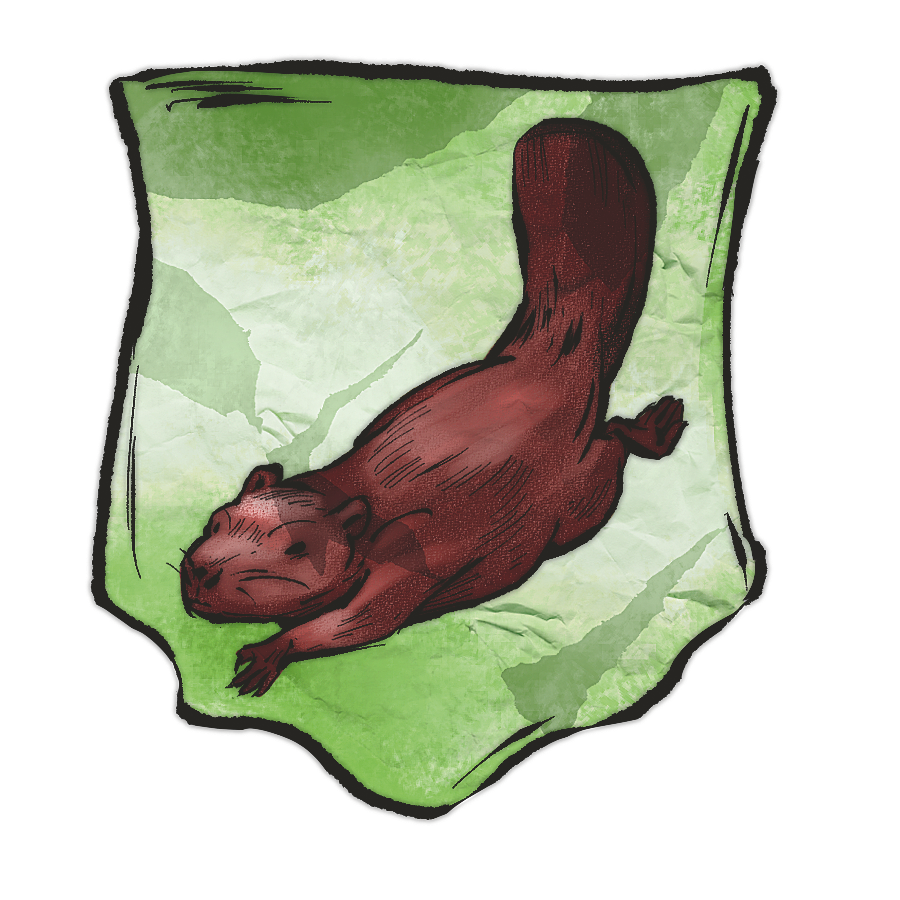What is a Treaty?

The Indigenous Peoples of this region have long understood a treaty as a formal agreement between peoples or nations that creates a framework for a relationship and an ongoing process for maintaining it. Treaties are not a fixed contract or a record of a one-time event.
Treaties reflect Indigenous understandings of how the world works. The Wendat, Anishinaabek, and Haudenosaunee all have ceremonies that remind people that all life is interconnected and that we are indebted to other beings and life forces for our survival and flourishing. Plants, animals, and other beings have spirit and agency, roles and responsibilities – and humans have reciprocal duties of care to make sure that all life can continue.
A treaty establishes ongoing responsibilities to one another, other beings, and the land. It creates a cooperative interdependence and a form of kinship.
Treaties are made for a variety of reasons, including to make peace, build alliances, establish or protect trade, and make amends for harmful behaviours by the members of either party. While the territories of individual nations are clearly recognized and remain distinct, Indigenous treaties create a relational space through gift giving and networks of trade and may include agreements to share access to specific resources.
Without alliance relationships fostered through exchange and trade, strangers remain enemies. Reciprocal gift giving is essential for maintaining Indigenous alliances. Sharing is highly valued: wealth is redistributed through gift giving, and wealth accumulation by individuals is considered selfish. Leaders are expected to be especially generous provides and protectors. They can't command obedience but must lead by persuasion, even in warfare.
Once Europeans arrive in North America, Indigenous Peoples extend their diplomatic practices of treaty making to incorporate Europeans into their world.
Gimma Stace Laforme
What is a Treaty?
Gimma Stace Laforme
What are our Treaty Responsibilities?

Wampum
Wampum is a string or belt of small tubular beads made from purple and white marine shells, woven into symbolic designs. According to Haudenosaunee tradition, Wampum was first developed for ceremonial use by the Peacemaker and Aionwatha/Hiawatha and came to be used across the Great Lakes region and beyond. Wampum was offered during meetings between nations to signify respect and the seriousness of intent.
Wampum is a living presence with the spiritual power to manifest stories, as the symbolic designs on Wampum Belts capture the words and pledges made in its presence. As mnemonic devices, they are crucial for maintaining the oral memory of treaty making.
Belts were passed on from generation to generation, and Wampum Keepers are charged with holding the memory of the pledges they contain. The recitation of the meaning of a Wampum Belt in Council was, and continues to be, an essential part of renewing an agreement. Wampum signifies permanence.
Indigenous nations use highly metaphoric diplomatic language in treaty making to aid memory and express concepts.
What symbols do we need to become familiar with to understand the treaties in Toronto? We've highlighted some in purple.
Keith Jamieson
How is Wampun Read?
Keith Jamieson
Are Wampum still relevant today?

Clans
Alliances operate at all levels of society and create commitments to ongoing mutual benefit. In each Wendat, Haudenosaunee, and Anishinaabe community, multiple Clans are the building blocks of alliances and communal identity. All members of the same Clan, even in different communities, are considered related and must offer one another hospitality. Marriages are always between people of different Clans. Marriages not only join people, but they also strengthen inter-Clan relations within and between communities. Women play key roles in arranging and maintaining kin alliances.
Wendat Clans
Turtle, Wolf, Bear, Deer, Beaver, Hawk, Porcupine, and Snake.
Haudenosaunee Clans
Haudenosaunee/Five Nations (later Six Nations)
The number of Clans varies from nation to nation, with the smallest number being three: Turtle, Wolf, and Bear. The Clans are divided into the three elements: land (Bear, Wolf, Deer), water (Turtle, Eel, Beaver), and air (Snipe, Hawk, Heron), though some of these, such as the turtle Clan, have subgroups.
Anishinaabe Clans
Anishinaabe Doodmep (Clans) vary from region to region and include many sub-Clans, but common Clans include the Crane (Heron), Loon, Bear, Wolf, Hoof (Deer), Bird, Marten, and Fish.

When introducing yourself in Indigenous communities, it’s common to state your nation, your community, your Clan, your family, and your name. With this set of information, we learn so much about one another. This can help us understand the functions and duties we hold and the promises we carry.
1. Generate iconography for the nation(s) you are part of.
Doodle an image for the nation(s) with which you identify by bloodline or citizenship. Consider their names. Take some time to consider your earliest teachers from your real or imagined “original homelands.”
2. Generate iconography for the Clan(s) you are part of.
Each nation has its own approach to how Clans are divided, represented, and passed on.
When ogimaag (Chiefs) signed many historical treaties, they did so by making the mark of the other-than-human progenitor of their Clan. In doing so, they invoked the networks of governance and alliance they belonged to, including alliances between human beings and with more-than-human beings. They connected their new treaty partner to these pre-existing networks of alliances and recommitted to an ongoing relationship between treaty partners and with the land, bringing European treaty partners into an Anishinaabe legal world.
What Clans do your ancestors have, if any? What might you share about these Clans (or crests) or other identity symbols? What teachings or qualities (e.g., the lion, the eagle, the wheat sheaf ) do you remember or have you recovered that you can share?
3. Generate iconography for the name(s) you carry.
What responsibilities are implied in your names? Do the names indicate any special lineage, job, or gift? What do these names reveal about the relationship between peoples of those nations, local ecologies, and other-than-human inhabitants within those ecologies?
A key aspect of maintaining relationships is assigning old names to people, who then carry on the responsibilities connected to that name over time. Names such as Corlaer and Onontio were given to representatives of the nations we were in alliance with – the Dutch, the French, the English. Canada’s representative, Justin Trudeau, was given the name “The One Who Keeps Trying” by the Tsuut’ina in Treaty Six territory. What do such names imply about their responsibilities?
Represent your name visually or find an old or new name that expresses your responsibilities or commitments. It could also be a gift or strength you can offer the community. The name is a promise that you’ll uphold.
4. Generate iconography for the City of Toronto.
Generate iconography for Toronto by drawing on your own graphic representations of its landscapes, plant and animal life, and waterfront.
5. Create a new City of Toronto crest or coat of arms using collected iconography.
When the City of Toronto’s old coat of arms got a makeover in 1962, the Mississauga warrior’s Plains-style headdress was replaced with two feathers to suggest apparel more appropriate to this region. Under the figures of the warrior and Britannia, the words “Industry, Intelligence, Integrity” remained. After the city’s amalgamation in 1998, the coat of arms was completely redesigned: both the warrior and Britannia disappeared and were replaced by a beaver, a bear, and a golden eagle. The eagle, “known for its strength, bravery and power,” was chosen to represent the Mississaugas of the Credit First Nation and the Huron- Wendat Nation, “on whose traditional territory the City of Toronto is now located,” but the golden eagle is not indigenous to this area and was used instead of a bald eagle (symbol of the Mississaugas of the Credit) because the latter is strongly associated with the United States. The motto became “Diversity Our Strength.”
We invite you to consider the various crests and iconography that belong to this area: the Mississaugas of the Credit crest, the official City of Toronto coat of arms, the Ontario flag, and iconography belonging to regional Indigenous nations (murals, flags, etc.).
You now know the various interpretations for the meaning of Toronto (for a reminder, click here). We invite you to reflect upon these interpretations, which speak of gathering, fishing weirs, and a place of plenty. Next, integrate regional Indigenous iconography, such as Doodem markers, Clan groupings, animals, weapons, Wampum designs, or other icons.
Using the City of Toronto coat of arms as inspiration, incorporate the visuals that you generated for your nation, Clan, name, and city into a new crest or coat of arms for the city. This will be a rich mnemonic device to use to talk through your own recognition of these lands. Create a crest that for you best reflects the spirit and character of this city you call home. Share it with others.
Council Fire
An Anishinaabe, Wendat, and Haudenosaunee metaphor for governance. An official meeting place for Councils, alliances, and treaty making.
Council Fires are both physical places and a metaphor for governance – and, by extension, a metaphor for the community of people who gather at the fire.
A Clan, community, or nation could hold a Council to resolve internal matters or make decisions that affect all parties. Two or more Clans or nations could hold a Council to air differences, settle disputes, and protect the rights of their citizens. Regional Council Fires were hosted and maintained by a particular Clan (e.g., the Eagle Clan of the Mississaugas of the Credit) or nation (e.g., the Onondaga Nation of the Haudenosaunee Confederacy) and could be returned to annually or semiannually over hundreds of years.
The fire of a Council Fire is considered sacred and purifying. Words spoken over it are carried by the smoke to the Creator/Great Spirit and the Ancestors. When agreement is reached, a pipe is sent around the Council Fire so that all participants can add their own puff of smoke, signaling consent and unity.
To break a treaty was and is a very serious matter, as it violates a pledge made not only with other humans but also with the spirit world.
Male leaders or speakers generally led Council proceedings, but the men couldn’t make final or binding decisions on their own. They had to consult with and gain the approval of their communities, including women. Women and children were usually present at Councils. Their absence at a meeting between nations could signal hostile intent. If a Council Fire goes out, a relationship has been neglected or a treaty broken.

SHARED DISH
Or kettle or bowl
Peaceful relations
A shared dish is a metaphor used widely in Indigenous diplomacy across the Great Lakes region and eastern North America.
It appears in treaty relationships and alliances in many Indigenous contexts, including the Great Law of Peace, which unites the nations of the Haudenosaunee Confederacy through the teachings of their Peacemaker.
Once the Five Nations agreed to unite, the Roianeson [Hereditary Chiefs] sat in a circle to listen to the Peacemaker. The Peacemaker expressed this principle by passing around a bowl of beaver tail, a delicacy among the People of the Longhouse. As the leaders sat in this circle of fifty, the Roianeson took only what they needed, knowing the bowl had to complete its circle.
The dish can symbolize the bounty of the earth that feeds and nourishes all and the care, sharing, and cooperation necessary to ensure life continues.
This is expressed in agreements to hunt together or share food resources, such as was related by Anishinaabe Wampum Keeper Miskwaake/Yellowhead in relation to fishing at Mnjikaning:
"At the Narrows our fathers placed a dish with ladles around it, and a ladle for the Six Nations, who said to the Ojibways that the dish or bowl should never be emptied."
A shared meal is an embodied act involved in peacemaking.

Keith Jamieson
What is the Dish with One Spoon?
MAT
Land, territory
Indigenous land is held in common, with no concept of ownership in the Western sense, though families or Clans may have use of particular areas, and nations do establish jurisdictional boundaries with one another and areas of shared use. Each generation bears the responsibility to ensure the well-being of the land for future generations.
When Europeans first arrive, they are a tiny minority on Turtle Island, where Indigenous law prevails.
Newcomers have to negotiate with Indigenous nations according to Indigenous diplomatic Protocols (regardless of whether Europeans understand them) to ensure their own survival and establish trading relations – hence alliances and treaties.
At the same time, European explorers, traders, and rulers compete with one another to claim North American lands for European monarchs. They use the Doctrine of Discovery. The doctrine is developed through a series of papal rulings in the thirteen to fifteenth centuries and gives supposed divine sanction to the conquest, dispossession, and subjugation of non-Christians, purportedly to save their souls by converting them.
The Doctrine of Discovery becomes the underlying “legal” foundation for European colonialism and the slave trade. A related concept, terra nullius, justifies the takeover of land deemed vacant or “unimproved” by European standards. The Doctrine of Discovery has been discredited, but it remains the legal basis for claims of Crown sovereignty to this day.






